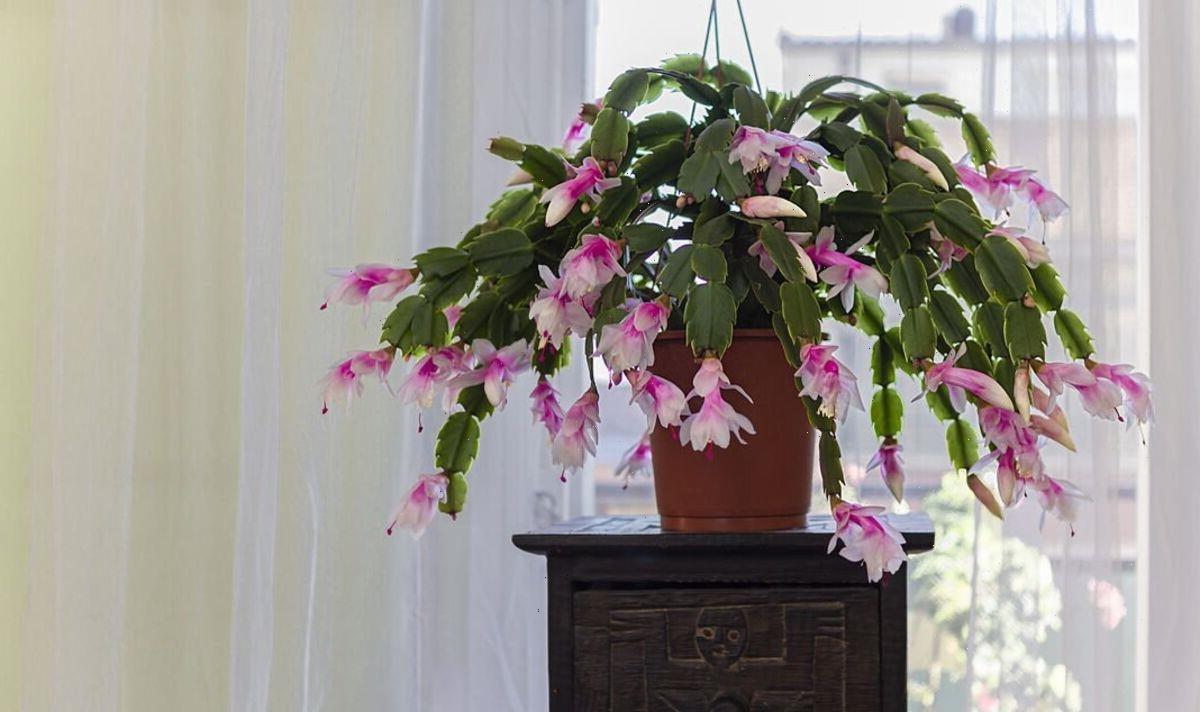Learn how to care for Christmas cactus and poinsettias
We use your sign-up to provide content in ways you’ve consented to and to improve our understanding of you. This may include adverts from us and 3rd parties based on our understanding. You can unsubscribe at any time. More info
The Christmas cactus naturally grows in jungle-type woodlands and can often be attached to trees. The plant likes partial shade, unlike other cacti which prefer full sun and arid conditions. The best position for a Christmas cactus is a well-lit position but not in direct sunlight. This houseplant also likes humidity, so a bright bathroom could be ideal.
If you don’t have a naturally humid spot in your home then plant owners can pop the plant on top of some gravel in a saucer or tray.
One aspect of Christmas cactus care that can be challenging is the watering routine. Although the plant isn’t the same as other desert-dwelling cacti, it only needs light watering in the winter.
Gardening experts from popular plant food brand, Baby Bio, have shared their advice for watering Christmas cacti, how to make them re-bloom and how to grow more Christmas cacti from cuttings.
The experts said overwatering the plant is “one of the biggest killers” because they only require watering “once a month” in the winter.

The experts said: “Like all cacti, overwatering is one of the biggest killers of the Christmas cactus and they only require watering once every couple of weeks during the summer, and as little as once a month during winter.
“Only water when the top two inches of soil are completely dry, so use your finger or a pencil to test its moisture levels before each water.
“If it feels dry, aerate the soil to allow for an even distribution and use tepid water, or water from the bottom of your pot has drainage holes.”
The Christmas cactus should be in the middle of its flowering period right now. The plant should have started blooming in late November with flowers surviving until late January.
DON’T MISS
‘Problematic’ poinsettia mistakes to avoid ‘entire plant dying’ [INSIGHT]
‘Most effective’ tip to stop black flies ‘damaging’ your houseplants [UPDATE]
‘Problematic’ poinsettia mistakes to avoid ‘entire plant dying’ [ANALYSIS]
However, don’t despair if your plant isn’t blooming as it should be. The gardening experts said “the key” to encouraging the plant to bloom is fertilising it regularly with cactus food.
The experts suggested using five to 10 drops per half a litre of water every time the plant needs watering during its growing season – from spring to autumn.
Reduce watering during the plant’s resting period from September to November.
During this time, plant owners should also reduce temperature and lighting to force the plant into dormancy.
Looking for a new home, or just fancy a look? Add your postcode below or visit InYourArea
When the plant is resting, it typically needs around twelve hours of darkness per day to begin flowering.
The experts added: “Once buds begin to appear, you can move the plant to a brighter, warmer area in the home but be mindful of placing it in direct sunlight or draughts.
“Prune your Christmas cactus after it has bloomed, which will encourage more stems to grow and increase the likelihood of it blossoming the following year.”
The plant can be grown from cuttings to create more Christmas cacti ready for winter.

The expert said the plant is “very easy to propagate” but it’s best to take cuttings in the early spring.
The gardening experts said: “Using a clean, sharp knife or pair of scissors, simply take a Y-shaped cutting from the end of a stem, near to the lower sections of the plant.
“Allow the end of the cutting to dry out for approximately a day to avoid stem rot, then plant it into well-draining compost about 1cm deep into the soil.
“Place your plant baby in bright but indirect sunlight and water it sparingly to prevent rotting.”
Source: Read Full Article
